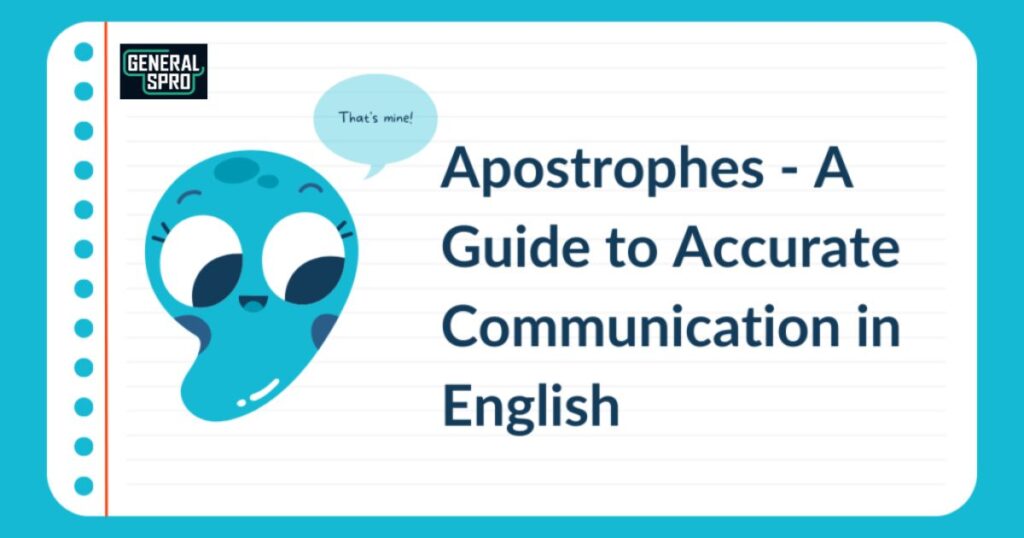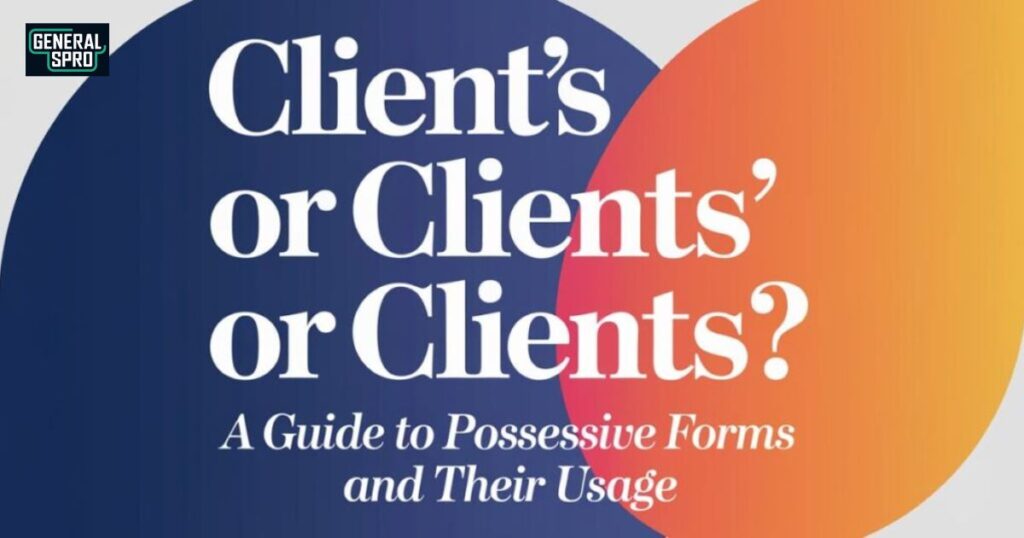Mastering the proper use of possessives in business writing can transform your professional communication.
Whether you’re drafting client reports, writing business proposals, or sending important emails, understanding when to use client’s, clients’, or clients makes a significant difference in conveying your message clearly and maintaining professional credibility.
The Basics: Clients vs. Client’s vs. Clients’

Understanding possessive case forms begins with recognizing the fundamental differences between plural nouns and possessive forms. Let’s break down these distinctions to enhance your grammar in professional writing.
Clients – Plural, Non-Possessive Form
The term “clients” simply indicates more than one client, with no ownership implied. In professional settings, you’ll frequently use this form when discussing multiple clients without referring to anything they own or possess.
For example, “Our clients attend monthly strategy meetings” or “The firm manages accounts for international clients.”
Client’s – Singular Possessive Form
When indicating ownership by a single client, we use “client’s.” This singular possessive form shows that one client owns or possesses something.
Consider this structure in professional contexts: “The client’s feedback shaped our approach” or “We must protect our client’s confidential information.”
Clients’ – Plural Possessive Form
The plural possessive form “clients'” indicates ownership by multiple clients. Place the apostrophe after the ‘s’ when referring to possession by more than one client.
For instance: “The clients’ recommendations led to significant improvements” or “We value our clients’ trust.”
Understanding the Singular Possessive Form: Client’s
The singular possessive form requires careful attention in professional writing. When referring to something belonging to one client, place the apostrophe before the ‘s’. Here’s a practical application table:
| Correct Usage | Example Sentence | Context |
| Client’s account | The client’s account needs updating | Single owner |
| Client’s proposal | Review the client’s proposal | Individual document |
| Client’s feedback | The client’s feedback was valuable | Single source |
Singular Possessive in Action
Consider a consulting scenario where you’re discussing an individual client’s project. You might write: “The client’s objectives align with our capabilities” or “We carefully analyzed the client’s market position.” In these cases, the singular possessive form clearly indicates individual ownership or association.
Understanding the Plural Possessive Form: Clients’
The plural possessive form presents unique challenges in professional writing. When multiple clients possess something collectively, place the apostrophe after the ‘s’. Let’s examine some practical applications:
Plural Possessive in Action
In business documentation, you might need to reference collective ownership or participation. For example: “The clients’ portfolios showed consistent growth” or “We addressed our clients’ concerns in the quarterly meeting.”
Differentiating Clients vs. Client’s vs. Clients’: When to Use Each
Understanding proper noun possessives requires careful attention to context. Here’s a comprehensive breakdown:
When to use “Clients”:
- Referring to multiple clients without possession
- Describing general groups
- Making broad statements about your customer base
When to use “Client’s”:
- Indicating ownership by one client
- Referring to individual client properties
- Discussing single-client scenarios
When to use “Clients'”:
- Showing collective ownership
- Referring to properties of multiple clients
- Discussing group-wide characteristics
Key Differences in the Possessive Form of “Client”
To master apostrophe usage rules and avoid common grammar mistakes, remember these essential distinctions:
- Singular vs. Plural: Before adding any apostrophe, determine if you’re referring to one or multiple clients
- Ownership: Identify whether possession is involved
- Placement: Position the apostrophe correctly based on number and possession
Writing style guidelines suggest checking these elements when proofreading:
- Subject-verb agreement with possessive forms
- Consistency in possessive usage throughout documents
- Clarity of ownership in complex sentences
Common Mistakes in Business Communication
Understanding possessive forms proves particularly challenging in professional settings. Business writers often struggle with apostrophe placement when drafting documents, emails, and reports.
These errors can diminish credibility and create confusion in important communications. Professional documents require meticulous attention to detail, especially regarding possession and plurality.
Mastering Apostrophe Rules in Professional Writing

The placement of apostrophes follows logical patterns that, once understood, become second nature. In professional contexts, this knowledge proves invaluable when creating client documentation, contracts, or business correspondence.
The key lies in identifying whether you’re dealing with singular or plural possession before applying the appropriate rule.
Impact of Proper Grammar on Business Credibility
Professional credibility often hinges on attention to detail, particularly in written communication. When documents contain proper grammatical structures, they reflect positively on both the writer and the organization.
Conversely, misused possessives can undermine otherwise excellent content and create doubt about professional competence.
Digital Communication and Possessive Forms
In today’s digital landscape, written communication dominates professional interactions. Email threads, instant messages, and digital documents require consistent adherence to grammatical rules.
The rapid pace of digital communication makes it even more crucial to maintain proper possessive forms across all platforms.
International Business Considerations
Global business environments present unique challenges in maintaining grammatical accuracy. Non-native English speakers may find possessive forms particularly challenging, making clear guidelines essential.
Understanding these rules becomes crucial for effective international business communication.
Legal Documentation and Possessive Usage
Legal documents demand precise language and correct grammatical construction. Misused possessives in contracts or agreements could lead to misinterpretation or legal complications.
Proper possessive form usage ensures clarity and enforceability in legal business documents.
Client Communication Best Practices
Effective client communication requires consistency in grammatical usage. Professional correspondence should demonstrate mastery of basic grammar rules, including possessive forms. This attention to detail helps build and maintain strong client relationships.
Style Guides and Corporate Standards
Many organizations maintain style guides that address possessive usage. These guidelines ensure consistency across all business communications. Understanding and following these standards helps maintain professional document quality.
Technology and Grammar Checking Tools
Modern technology offers various tools for checking possessive usage. However, relying solely on automated checkers can lead to errors. Understanding the fundamental rules enables better use of these technological aids.
Training and Development Considerations

Organizations should include grammar training in professional development programs. Understanding possessive forms contributes to overall communication effectiveness. Regular training helps maintain high standards in business writing.
Industry-Specific Applications
Different industries may have unique requirements for possessive usage. Technical documentation, financial reports, and marketing materials each present specific challenges. Understanding industry conventions helps maintain professional standards.
Social Media and Professional Branding
Professional social media presence requires proper grammar usage. Even in casual platforms, maintaining correct possessive forms reflects professionalism. This attention to detail supports strong personal and corporate branding.
Future Trends in Business Communication
Evolution in business communication may affect grammar usage patterns. Digital transformation continues to influence writing standards and practices. Staying current with these changes while maintaining grammatical accuracy remains important.
Quality Assurance in Written Communication
Implementing review processes helps maintain grammatical standards. Regular document audits can identify patterns of possessive misuse. These quality measures help maintain professional communication standards.
Measuring Communication Effectiveness
Organizations should monitor the impact of grammatical accuracy. Clear communication, including proper possessive usage, affects business outcomes. Regular assessment helps maintain high standards in professional writing.
FAQ’s
When should I use “client’s” versus “clients'” in business writing?
Use “client’s” when referring to something belonging to one client (singular possessive). Use “clients'” when indicating ownership by multiple clients (plural possessive).
How do I handle possessives in formal business contracts?
Always maintain consistency throughout the document. Define key terms at the beginning, including whether you’re referring to singular or plural clients, and follow standard possessive rules accordingly.
What’s the correct way to write about multiple clients’ projects?
When referring to projects belonging to multiple clients, place the apostrophe after the ‘s’ (clients’ projects). For example: “Our clients’ projects are progressing well.”
Is there any difference in possessive rules for digital communication?
The rules remain the same whether writing emails, digital documents, or traditional correspondence. Professional standards should be maintained across all platforms.
How do I indicate joint ownership between two clients?
When two clients jointly own something, add the possessive form only to the last name. For example: “John and Mary’s shared account” rather than “John’s and Mary’s shared account.”
Should I use possessives in headers and titles of business documents?
Yes, maintain proper possessive forms in headers and titles. Clarity and correctness in titles set the tone for professional documents.
How do I handle possessives with client names ending in ‘s’?
For singular client names ending in ‘s’, add an apostrophe and an additional ‘s’ (e.g., “Mr. Jones’s account”). Some style guides permit just an apostrophe (Mr. Jones’ account).
Can I use apostrophes to make client abbreviations plural?
No, use a simple ‘s’ to make abbreviations plural without an apostrophe (e.g., “VIPs” not “VIP’s”). Use apostrophes only to show possession.
Conclusion
Understanding the proper use of possessive forms with “client” is fundamental to polished professional writing. Whether you’re drafting important business documents, communicating with stakeholders, or preparing client presentations, the correct usage of client’s, clients’, and clients demonstrates attention to detail and professional competence.
Remember that singular possession (client’s) indicates ownership by one client, while plural possession (clients’) shows ownership by multiple clients. The simple plural form (clients) is used when no ownership is involved.
By mastering these distinctions, you’ll enhance your business communications and maintain the professional standards expected in today’s competitive business environment. Keep this guide handy as a reference, and you’ll find that proper possessive usage becomes second nature in your professional writing.








